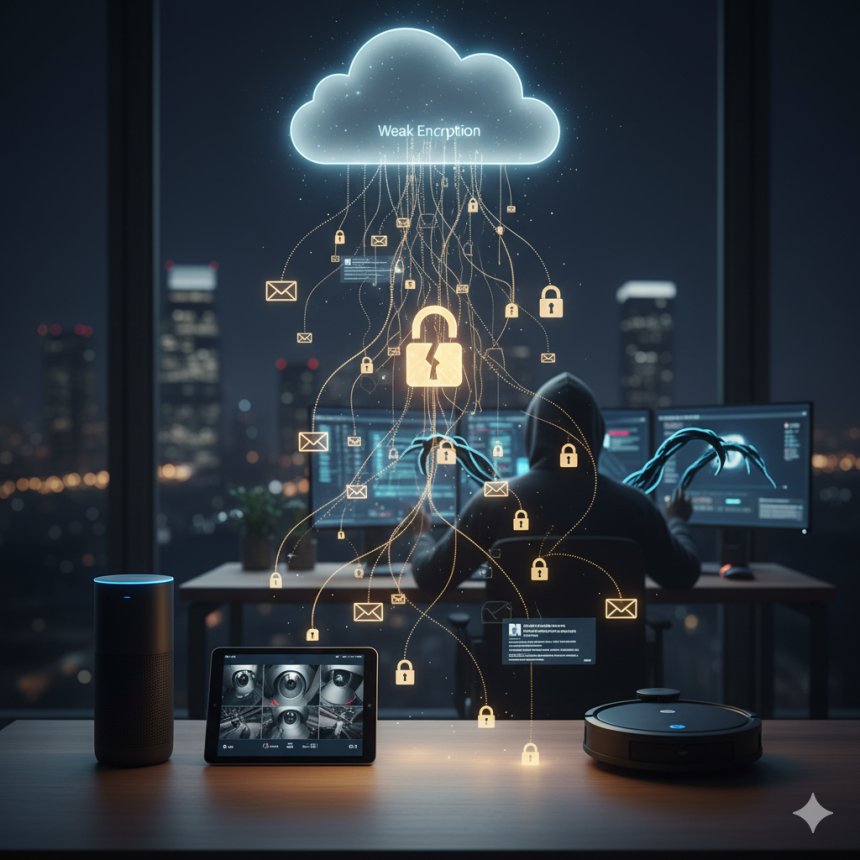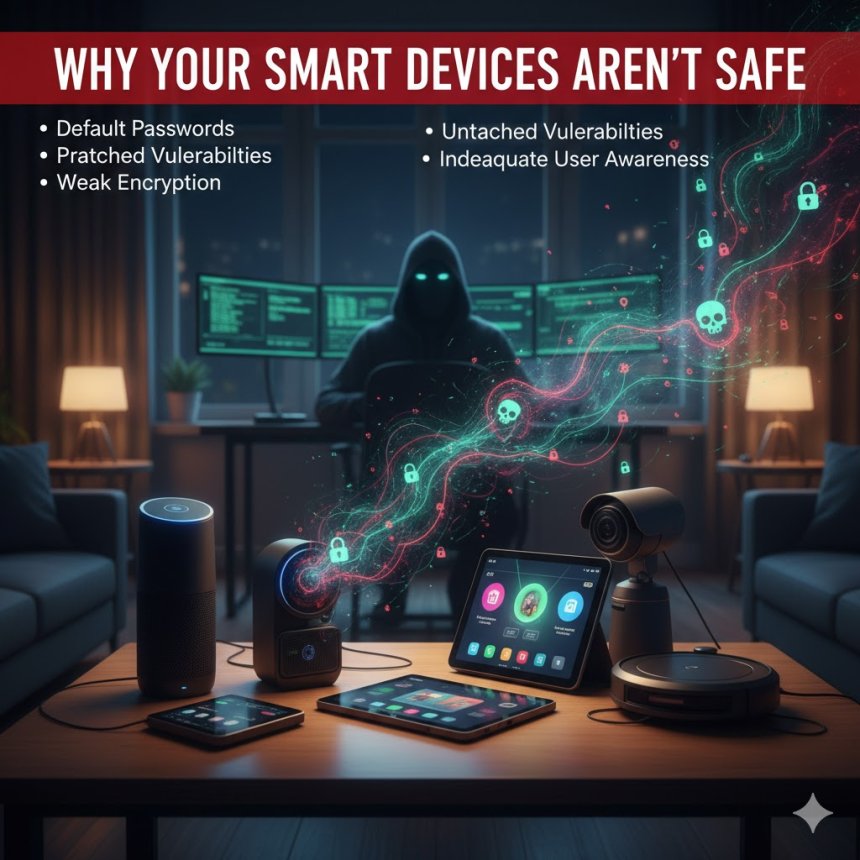Let's explore the multifaceted reasons why your smart devices might not be as safe as you think.
1. Lack of Robust Security by Design:
Many IoT manufacturers prioritize speed to market and low production costs over robust security measures. This often results in devices being released with fundamental security flaws, such as:
- Default Passwords: Devices often come with easily guessable default usernames and passwords (e.g., "admin/admin," "user/12345"). If users don't change these, their devices become an open invitation for hackers.
- Unpatched Vulnerabilities: Once a device is sold, manufacturers may not provide regular security updates or patches for newly discovered vulnerabilities. This leaves devices susceptible to exploits long after they've been purchased.
- Weak Encryption: Data transmitted between smart devices and their cloud services may not be adequately encrypted, making it vulnerable to interception by malicious actors.

2. Inadequate User Awareness and Practices
Even with the best security features, user behavior plays a critical role. Many users are unaware of the security risks associated with their smart devices or don't take the necessary precautions:
- Ignoring Updates: Prompting for software updates is often met with annoyance rather than urgency. These updates frequently contain crucial security patches that address known vulnerabilities.
- Sharing Too Much Information: Users might inadvertently grant excessive permissions to apps or devices, allowing them to access sensitive personal data beyond what is necessary for their function.
- Public Wi-Fi Risks: Connecting smart devices to unsecured public Wi-Fi networks can expose them to various attacks, as these networks are often ripe for eavesdropping.

 3. The Complexity of the Connected Devices Ecosystem
3. The Complexity of the Connected Devices Ecosystem
The interconnected nature of IoT devices creates a complex web where a vulnerability in one device can compromise an entire network.
- Botnets: Compromised smart devices can be recruited into "botnets" – networks of enslaved devices used by hackers to launch large-scale cyberattacks, such as Distributed Denial of Service (DDoS) attacks. The Mirai botnet, for instance, famously leveraged vulnerable IoT devices.
4. Data Privacy Concerns
Many smart devices collect vast amounts of personal data, from voice commands and location data to behavioral patterns.
- Eavesdropping Risks: Smart speakers are always listening for their wake word, raising concerns about accidental recordings or even intentional eavesdropping if compromised.
- Data Exploitation: The data collected by these devices can be used for targeted advertising, but in the wrong hands, it could be exploited for more malicious purposes, such as identity theft or blackmail.
- Third-Party Access: The terms and conditions of many smart devices often allow third parties to access your data, which can lead to further privacy concerns.
5. Physical Security Threats
Beyond data and privacy, compromised smart devices can pose physical security risks.
- Smart Locks and Alarms: A hacked smart lock could unlock your front door, or a compromised security camera could provide intruders with real-time intelligence about your home.
- Medical Devices: In a more extreme scenario, vulnerabilities in smart medical devices could have life-threatening consequences.
6. Regulatory Lag and Lack of Standardization
The rapid proliferation of IoT devices has outpaced regulatory efforts. There's a lack of universal security standards and clear legal frameworks to hold manufacturers accountable for insecure products. This creates a Wild West environment where security is often an afterthought.
What Can You Do?
While the landscape of IoT security can seem daunting, there are steps you can take to protect yourself:
- Change Default Passwords: Immediately change all default passwords on your new smart devices to strong, unique ones.
- Enable Two-Factor Authentication (2FA): Where available, enable 2FA for an added layer of security.
- Keep Software Updated: Regularly check for and install firmware and software updates for all your smart devices.
- Review Permissions: Be mindful of the permissions you grant to apps and devices. Only allow what is necessary.
- Isolate Devices: Consider setting up a separate Wi-Fi network (a "guest" network) for your smart devices to segment them from your primary home network.
- Research Before You Buy: Choose reputable brands that have a track record of prioritizing security and providing ongoing support.
- Disable Unnecessary Features: If a device has features you don't use (like a microphone on a device where it's not essential), disable them.
- Be Mindful of Data Collection: Understand what data your devices are collecting and how it's being used.
The convenience of smart devices is undeniable, but it's crucial to approach them with a healthy dose of skepticism regarding their security. By understanding the risks and taking proactive measures, you can better protect your digital and physical well-being in the connected age.
What's Your Reaction?
 Like
0
Like
0
 Dislike
0
Dislike
0
 Love
0
Love
0
 Funny
0
Funny
0
 Angry
0
Angry
0
 Sad
0
Sad
0
 Wow
0
Wow
0



 3. The Complexity of the Connected Devices Ecosystem
3. The Complexity of the Connected Devices Ecosystem Like
0
Like
0
 Dislike
0
Dislike
0
 Love
0
Love
0
 Funny
0
Funny
0
 Angry
0
Angry
0
 Sad
0
Sad
0
 Wow
0
Wow
0